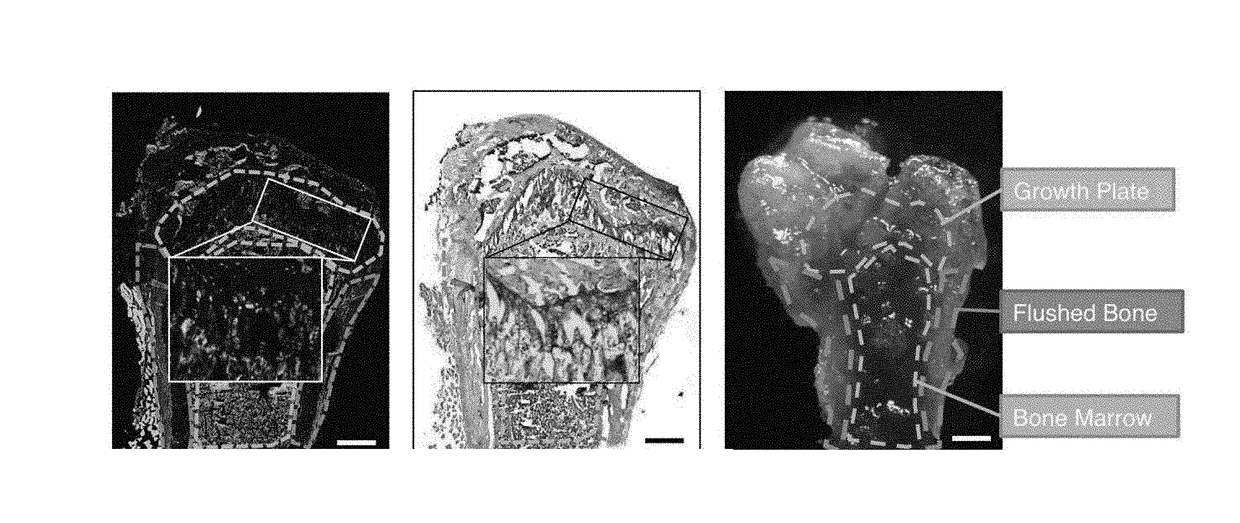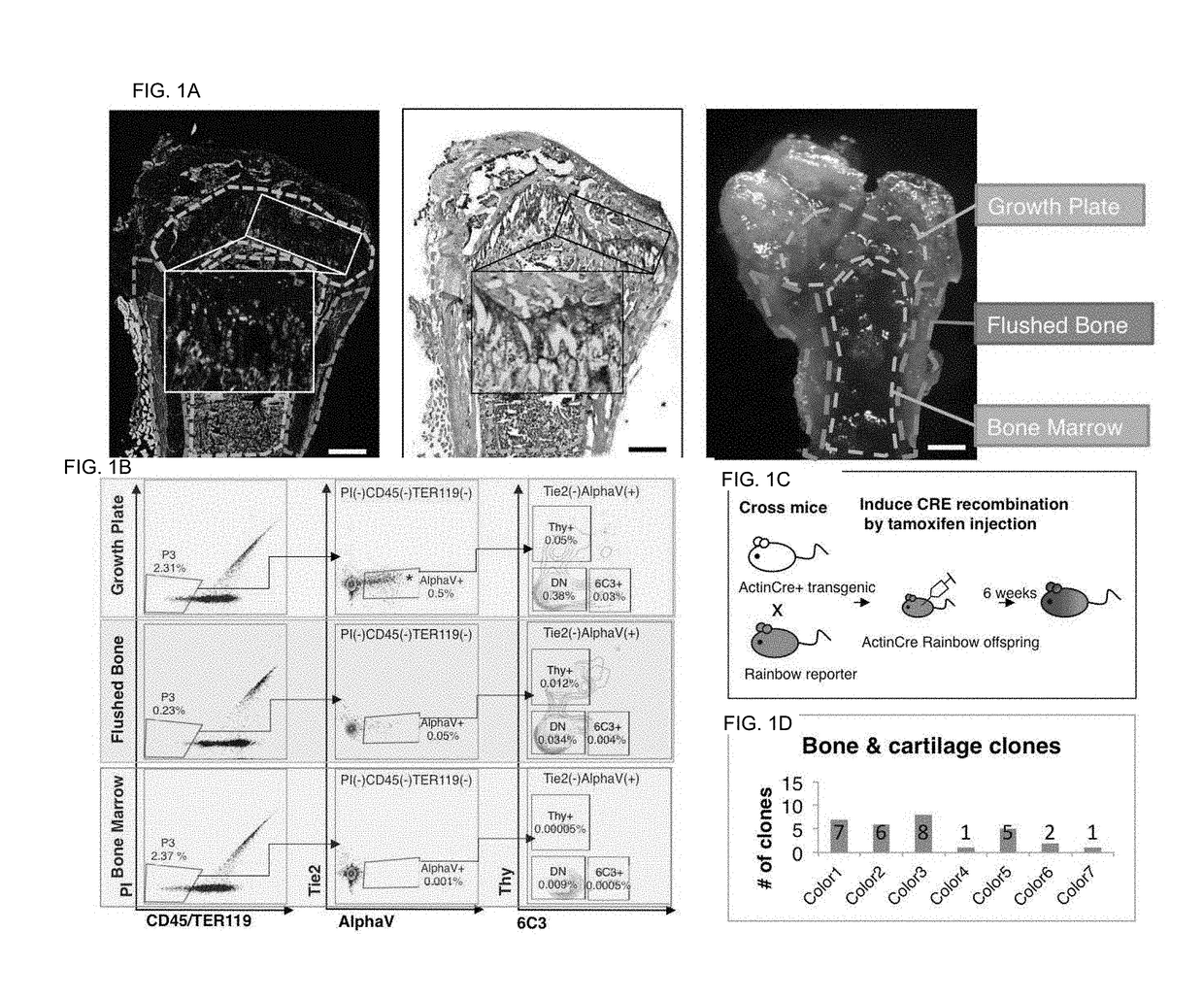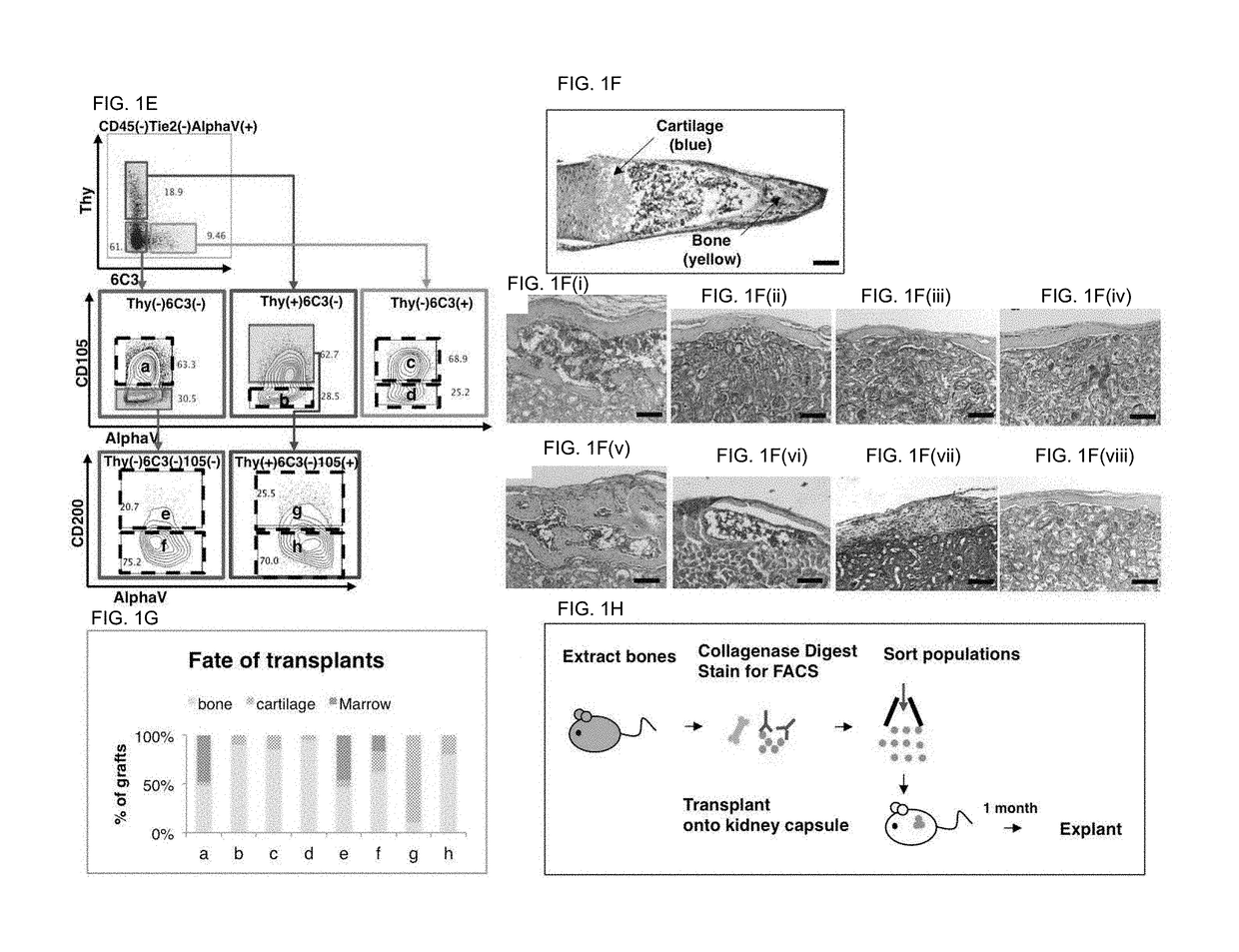Factors and cells that provide for induction of bone, bone marrow, and cartilage
- Summary
- Abstract
- Description
- Claims
- Application Information
AI Technical Summary
Benefits of technology
Problems solved by technology
Method used
Image
Examples
example 1
Interchangeable Fates of Osteogenic and Chondrogenic Progenitors Revealed by Comprehensive Lineage-Mapping of Multipotent Skeletal Stem Cells.
[0173]Bone, cartilage, and bone marrow stroma are the primary components of the skeleton but the origins of postnatal skeletal tissues remain unclear. Here, we map bone and cartilage development from a population of highly pure, post-natal skeletal stem cells (mouse Skeletal Stem Cell, mSSC) and its downstream distinct progenitors of bone, cartilage and stromal tissue. We then determined the mSSC lineage relationships to its progeny. We investigated the transcriptome of the stem / progenitor cells for unique gene expression patterns that would indicate potential intrinsic and extrinsic regulators of mSSC lineage commitment. These analyses reveal that supportive stroma generated from the mSSC reflexively regulates differentiation of the mSSC and also regulates hematopoiesis. We demonstrate that some mSSC niche factors can be potent inducers of sk...
example 2
Human SSC
[0248]As discussed in Example 1, using a transgenic “Rainbow mouse” model (for in vivo tracing of clonally derived tissues), we found that bone, cartilage, and stromal tissues are clonally related in mice. Conversely, we found no evidence that they share the same clonal origins as fat, vessel, or skeletal muscle tissue, implying that bone, cartilage and stromal tissues arise from their own distinct stem / progenitor cells following embryogenesis. Our human skeletal stem / progenitor data demonstrate the existence of the hSSC and its downstream progenitor cells in both fetal and adult skeletal tissue.
[0249]Analyses include genomic studies, differentiation potential, lineage tracing performed on fresh isolated primary cells from both fetal and adult human tissue. It was determined that the subcapsular location in the kidney is a novel extra-skeletal site for engraftment of transplanted skeletogenic cells. Incorporating this technique defines a functional assay for examining the f...
example 3
[0271]Stem cell fate is influenced by the specialized microenvironment or “niche”, in which the cells reside (FIG. 19a-b). Modulating niche signaling can stimulate tissue growth by inducing proliferation of stem cells, as we have observed with mSSCs. Niche interactions may also play significant roles in maintaining lineage commitment; for instance, increased local BMP2 signaling can promote expansion and survival of mouse SSC. Microarray data on hSSC demonstrated conservation of genes involved in BMP, WNT, and VEGF signaling which we observed were involved in survival, proliferation, and differentiation of mSSC (FIG. 19c-e). Thus, a system of autocrine and paracrine signaling in the niche microenvironment of hSSCs, regulates their expansion, activity and differentiation (FIG. 19b). The application of specific exogenous morphogens such as BMP2, WNT and VEGFA can mimic niche signaling, leading to survival, and / or proliferation, of hSSC in minimal conditions. Alternatively, other combi...
PUM
 Login to View More
Login to View More Abstract
Description
Claims
Application Information
 Login to View More
Login to View More - Generate Ideas
- Intellectual Property
- Life Sciences
- Materials
- Tech Scout
- Unparalleled Data Quality
- Higher Quality Content
- 60% Fewer Hallucinations
Browse by: Latest US Patents, China's latest patents, Technical Efficacy Thesaurus, Application Domain, Technology Topic, Popular Technical Reports.
© 2025 PatSnap. All rights reserved.Legal|Privacy policy|Modern Slavery Act Transparency Statement|Sitemap|About US| Contact US: help@patsnap.com



